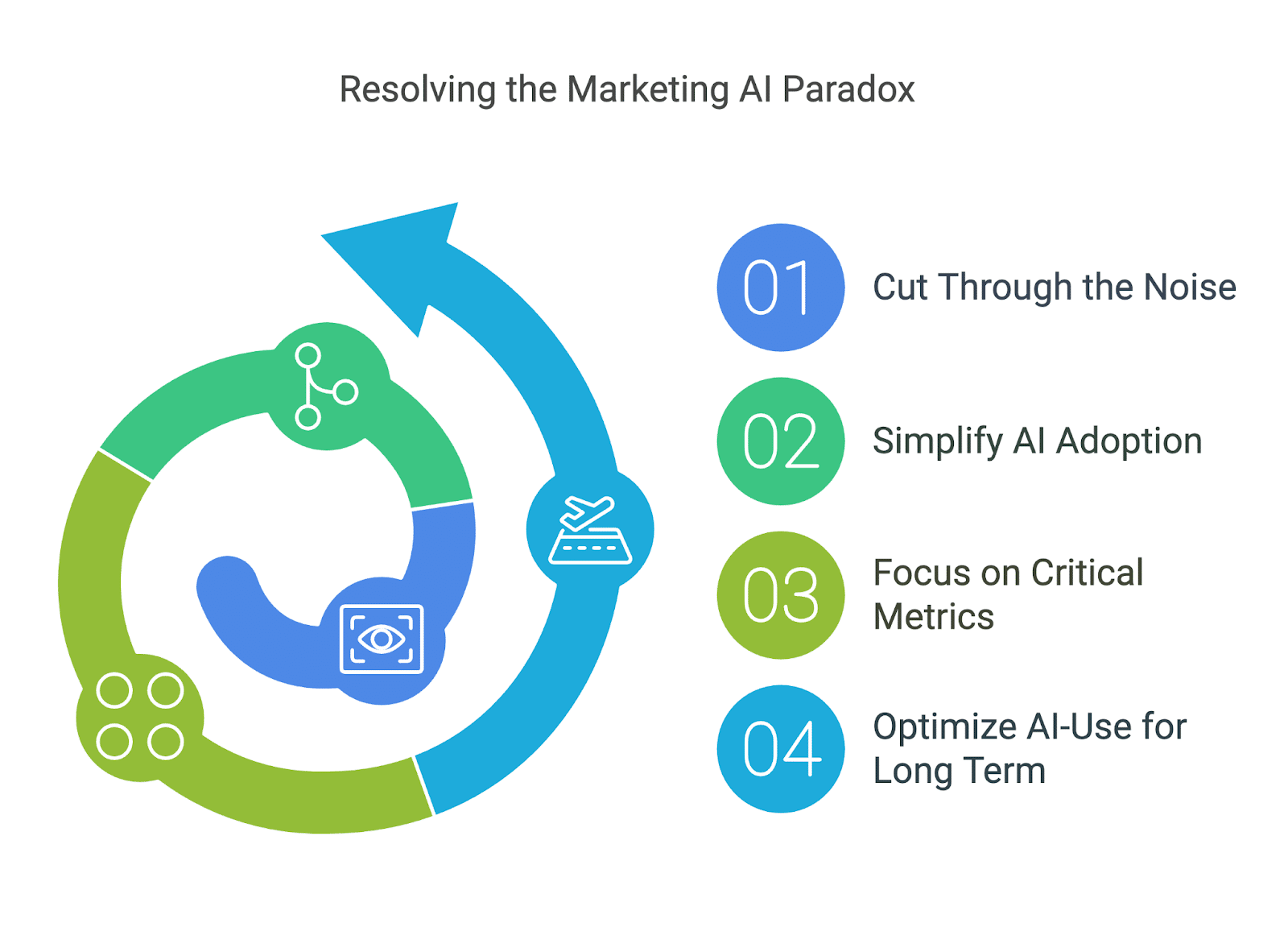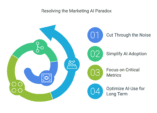An overwhelming workload keeps marketers from learning or implementing AI tools that can cut that load down to size. That, in a nutshell, is the “marketing AI paradox.”
How can marketers break this cycle? Here’s a structured, actionable approach to overcome the paradox and take advantage of AI.

activities">Step 1: Eliminate low-value activities
Most marketing teams have to handle tasks that add little or no business value. Identifying and stopping these activities can save significant time for higher-value work.
Begin by auditing your team’s routine. Pinpoint unproductive meetings, unnecessary reports or stakeholder requests that offer minimal returns.
Collaborate as a team to highlight time-wasting activities and prioritize eliminating them. With honesty and rigor, most teams can free up 10-50% of their available time. Redirect these reclaimed hours to strategic efforts, including AI implementation.
Actionable insight: List the top five activities you suspect waste the most time. Evaluate their necessity and devise plans to either stop or streamline them.
Dig deeper: AI readiness checklist: 7 key steps to a successful integration
Step 2: Simplify AI adoption
AI often seems daunting due to concerns about complexity, data privacy and intellectual property. However, starting small and focusing on simple, high-impact tasks can help ease adoption.
- Automate tedious tasks: Delegate repetitive or unenjoyable tasks to AI tools. For instance, designers can use Canva’s Magic Studio to automate resizing images for various platforms. Identify similar tasks that don’t require much oversight and are easy to hand off.
- Pilot high-impact use cases: Instead of launching multiple AI initiatives, start with one or two that align with your team’s capabilities and deliver tangible results.
- Hands-on training: Focus training efforts on immediate, practical applications. Short sessions (90-120 minutes) tailored to specific tasks can be more effective than extensive, theoretical programs.
- Address privacy concerns later: Begin with use cases that don’t involve sensitive customer data or intellectual property. For example, use AI for public-facing content creation or internal process automation.
Actionable insight: Choose one small, low-risk task your team struggles with and explore AI solutions to address it within a week.
Dig deeper: Why starting small with AI pilots before scaling is a mistake
Step 3: Prioritize critical metrics
Marketers often juggle multiple goals and metrics. To avoid spreading efforts too thin, focus on the one metric that matters most to your organization’s success. Use AI to drive measurable improvements in that area.
For example, if customer acquisition is the priority, implement AI tools for personalized ad targeting or lead scoring. It might feel risky to deprioritize other metrics. Remember that most marketing effects — positive or negative — unfold over time. So you have time to determine the ones that matter and the ones that don’t.
Actionable insight: Identify your team’s most critical metric and brainstorm three AI-enabled strategies to improve it over the next quarter.
Dig deeper: Essential KPIs to measure generative AI’s success in marketing
Step 4: Plan for long-term AI integration
The initial steps in overcoming the AI paradox prioritize quick wins. However, sustainable success requires a long-term approach, including:
- Forming an AI governance council to establish policies.
- Conducting audits of marketing processes to identify further automation opportunities.
- Developing a comprehensive AI strategy and roadmap.
While these activities are essential, they can be deferred until your team gains confidence with initial AI implementations. The key is to start small but remain committed to scaling efforts over time.
Actionable insight: Schedule a quarterly review to assess your AI initiatives and draft a long-term roadmap by the end of the year.
Dig deeper: Guardrails and governance: How to protect your brand while using AI
Breaking free from the paradox
Addressing the marketing AI paradox requires courage and discipline. Marketers can reclaim time and achieve greater productivity by cutting out low-value activities, starting small with AI, focusing on key metrics and planning for sustainable integration.
The post Don’t have the time to implement time-saving AI tools? Here’s what to do. appeared first on MarTech.








